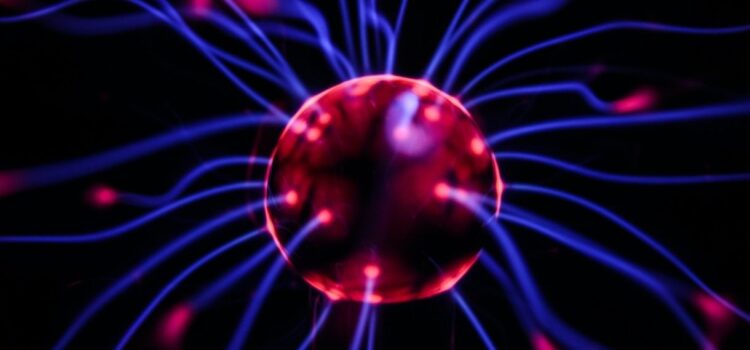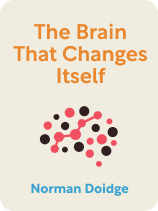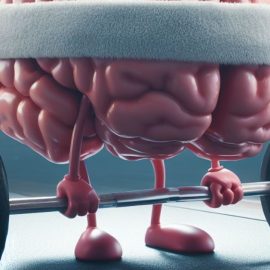

This article is an excerpt from the Shortform book guide to "The Brain That Changes Itself" by Norman Doidge. Shortform has the world's best summaries and analyses of books you should be reading.
Like this article? Sign up for a free trial here.
What is neuroplasticity and how does it work? What processes drive neuroplastic change within the brain?
In simple terms, neuroplasticity is your brain’s ability to rewire itself. Your brain is your processing center, and your brain’s structure and processes can change based on external or internal triggers to improve your brain’s performance and efficiency.
Keep reading to learn about the concept of neuroplasticity, how it works, and how it came about.
Neuroplasticity Explained
What is neuroplasticity and how does it work? Neuroplasticity is the brain’s ability to grow and reorganize itself in response to stimuli. The phenomenon of neuroplasticity means that, despite what we previously thought, our intelligence and ability levels are determined more by our environment than by our genes. Evidence also suggests that teaching children they have the power to change their own brains helps them learn better—particularly at-risk students.
How do these changes in your brain happen? Doidge explains that the brain is made up of neurons, or nerve cells, which send signals to each other to produce every one of the brain’s functions. Neurons are separated by tiny spaces called synapses. When one neuron sends a signal to another neuron, it releases a chemical called a neurotransmitter into the synapse. The neurotransmitter then travels to the next neuron and delivers it a message.
Neurons can send and receive two types of messages: signals that cause other neurons to fire and signals that make other neurons less likely to fire. Neuroplastic change occurs when a specific type of signal is sent between neurons again and again, so that a pathway is formed between them, which makes them more likely to fire in that same way in the future.
According to Doidge, the more a pathway is used, the more efficient it becomes. This is why practicing something a lot—using the same neural pathway—makes it easier to do. This also means that pathways that are not used frequently are less efficient, which is why doing something new or that you’re not used to doing can be so difficult.
For example, if you’re right-handed, you’re more likely to use your right hand for most things you do because that neural pathway is well-established. However, if you want to increase your skill with your left hand, you can practice using it for those activities, and as the pathways controlling your left hand become stronger, you’ll become more skillful with that hand. This is what Doidge means by neuroplasticity: your brain’s ability to change your thoughts, abilities, and behaviors by forging new neural paths.
| The Second Step of Neuroplasticity: Insulating Our Brain’s Pathways Doidge’s description of the role of neurons in neuroplasticity is extensive, but it may only be part of the neuroplastic picture. The new neuronal pathways created by learning new information or skills are like uninsulated electrical wires—they can successfully transfer their electrical signals, but research suggests this transference isn’t made efficient until a sheath of a fat called myelin forms around the pathway. This sheath insulates the pathway so that energy doesn’t leak out as electricity travels through it. The more myelin that forms around the pathway, the more efficient it becomes. This process—called myelination—is responsible for the development of what we call muscle memory, which is when a skill becomes so ingrained that you can do it without consciously thinking about it. This is how your new skills and ideas become long-term or permanent memories, or how you might go from consciously forcing yourself to use your non-dominant hand to being fully ambidextrous. Because myelination occurs on such a large scale in the brain but consists of so many micro-components, it’s very difficult to study, so its role in neuroplasticity has only recently been recognized. |
How Did the Concept of Neuroplasticity Develop?
Neuroplasticity wasn’t always considered valid in the field of neuroscience or related fields like psychology and biology. According to Doidge, the concept of the brain as plastic wasn’t taken seriously in the scientific community until around the 1960s. Instead, the brain was thought of as a machine with distinct parts designated for different functions. This was called localizationism and suggested the brain wasn’t capable of significant structural changes.
Neuroplasticity only became an accepted concept after many years of research provided the foundation for how the brain can change. In this section, we’ll examine localizationism and explore the evolution of our understanding of the brain, from mapping the areas of the brain with the functions they perform, to the critical period of neuroplasticity in infants, to the natural ways our brains change, and finally to how this information can be applied to modern treatments.
| Harmful Worldviews Stemming From Localizationism While some of the principles of localizationism—for example, that certain functions tended to be controlled by certain parts of the brain—were correct, the belief that localizationism was universal and inflexible is what led to the dismissal of neuroplastic concepts. Additionally, it led to the founding and validation of the pseudoscience of phrenology, or the belief that brain function can be examined by studying a person’s skull. This was based on the assumption that the structure of the brain shaped the skull. The concepts of phrenology have been debunked, but before that it was often used as a justification for racism, particularly in the United States. In the 1800s, certain scientists used studies of phrenology to claim that Africans’ brains made them inherently more prone to subservience and caused them to need a master to control them. Others used it to argue that white people were a separate species from other races like Native Americans and used this claim to justify land theft, colonization, and genocide of Native American tribes. |
Drawbacks of Neuroplasticity
Unfortunately, brain plasticity may have downsides, says Doidge. Because, as we’ve discussed, plasticity is competitive, when one area of the brain becomes unused, it’s likely to be taken over by other functions that are used regularly. This can make it difficult to break bad habits because using the pathways involved with those habits not only strengthens them, but also weakens the pathways that are not used by the bad habit.
(Shortform note: This pattern of engaging in a bad habit, strengthening that habit, and weakening good habits can create a harmful feedback loop: Any time a habit is triggered, you’re more likely to engage in that habit, which further reinforces the association of that habit with that same trigger. To break this loop and the bad habits it entails, experts recommend quitting bad habits cold turkey so you stop reinforcing them and then replacing them with good habits so those pathways get strengthened instead. If quitting cold turkey is too difficult or dangerous, you can still replace the bad habits with good ones using incremental steps.)
This also applies to learning a second language: The reason adults have more trouble learning a second language than children do is that the areas of their brain that process language are already being used to process their first language. It therefore takes more practice for an adult than for a child to create new pathways in that area to correspond to a second language. It’s easier to learn a second language while you’re acquiring your first language because the map of neural pathways for language widens to include both languages as they develop at the same time. However, when you’re learning a second language as an adult, that new language has to develop a brand new neural map rather than incorporating it into the first language’s map.
(Shortform note: Other research suggests that learning a language in childhood may be easier because of brain lateralization—the tendency of the brain to use either the left or right hemisphere more than the other in certain processes. Experts say that, during the critical period in childhood, the brain is able to use both hemispheres in learning language because it’s more plastic, whereas in adulthood, that learning would likely be specialized to the left hemisphere, which may reduce its connection to other parts of the brain and thus make learning harder.)
Doidge also suggests that neuroplasticity could be responsible for excessive worry and disorders like obsessive compulsive disorder. As your brain continually plays through anxiety-inducing scenarios, those pathways become stronger, which means you worry about them even more.
Though it may be the cause, Doidge also says that neuroplasticity could be the cure for excessive worry and obsessive compulsive disorder. Therapy that involves reframing the worrisome thoughts into something positive, or distracting yourself with something positive, can help weaken the worry pathways that have become so strong.
(Shortform note: Other research into obsessive compulsive disorder suggests that distraction from worry may not be as effective as thinking about your worry through metacognition. Rather than diverting your attention away from your obsessive thoughts, metacognition based on doubt therapy is designed to make you more comfortable with the uncertainty underlying those thoughts—for example, if you compulsively wash your hands because you always doubt they’re fully clean, this therapy would give you step by step instructions for becoming more comfortable with the idea that your hands might not be fully clean. While the approach is different, this method would also weaken the brain pathways involved in worry.)

———End of Preview———
Like what you just read? Read the rest of the world's best book summary and analysis of Norman Doidge's "The Brain That Changes Itself" at Shortform.
Here's what you'll find in our full The Brain That Changes Itself summary:
- How brain plasticity can help those with brain damage or congenital brain disorders
- Stories of real people whose lives have improved thanks to neuroplasticity
- A look at some of the negative effects neuroplasticity can have






